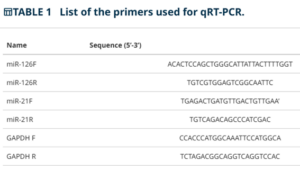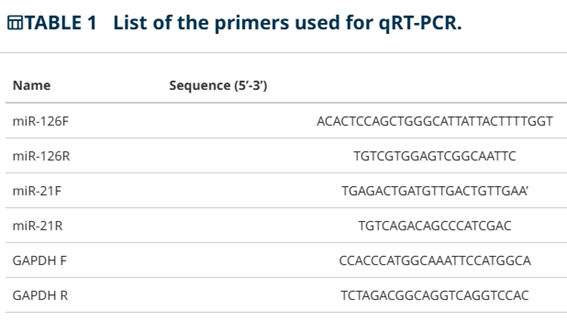HIGHLIGHTS
- Distinguishing complicated from non-complicated HCV is still a matter of debate.
- Differentiation of complicated cases depending on clinical scores may be misleading.
- Deregulated plasma expression levels of microRNA help in diagnosis of multiple diseases.
- Deregulated expression levels of microRNA 21 and 126 might be helpful for defining cases with complicated HCV.
ABSTRACT – Background
Objective: To investigate the ability of the estimated plasma gene-expression levels of microRNA (miR)-21 and 126 to define patients suspected to have hepatocellular carcinoma (HCC) among patients with complicated hepatitis-C virus (HCV) infection.
Methods: Patients with uncomplicated (U-HCV) or complicated HCV underwent clinical and ultrasonographic (US) evaluations and assessment for the computerized hepatorenal index, hepatic steatosis index and fibrosis indices. Blood samples were obtained for estimation of serum levels of alpha-fetoprotein (AFP) and tumor necrosis factor-α (TNF-α), and plasma expression levels of miR-21 and miR-126 using the quantitative reverse-transcriptase polymerase chain reaction (qRT-PCR).
Results: Serum levels of AFP and TNF-α were significantly higher in samples of HCV-HCC patients than controls and other HCV patients. Plasma levels of miR-21 were the highest, while miR-126 levels were the lowest in samples of HCV-HCC patients with significant differences in comparison to samples of controls and other HCV patients. The ROC curve analysis defined high plasma miR-21 levels as specific predictor for HCV infection, and could identify samples of complicated HCV, and samples of HCV-HCC patients, while estimated plasma levels of miR-126 could be applied to screen for HCV and its related complications.
Conclusion: Deregulated plasma expression levels of miR-21 and miR-126 might distinguish cases of HCV complicated by HCC and define cases of HCV-LC, even those that showed low Fib-4 scores.
AUTORES
EL-HAMMADY, Amr M MAREI, Yasmin M MOHAMMED, Raafat R RAHMAN, Shaymaa M Abd El MAREI, Yomna M SARHAN, Rizk S



